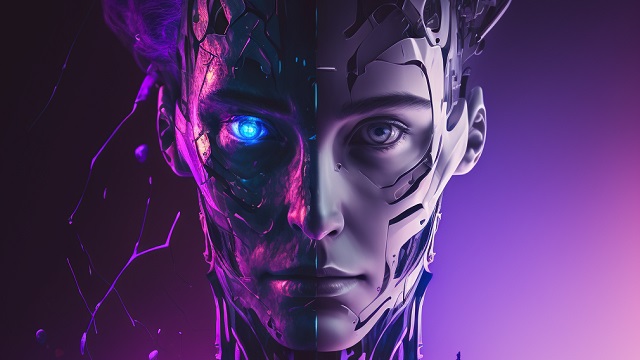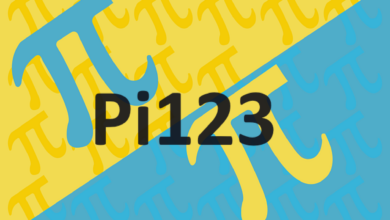
UX/UI designers have the opportunity to create products and services that make a real difference in people’s lives.
Research, concepting, design, prototyping, testing, juggling stakeholder expectations…managing deadlines!!!
Not to mention the constant need to self-educate and stay uptodate with the newest trends and advances in interface design.
As amazing as it is to be a designer, it can be hard work!!
This article aims to lend a helping hand. We will explore the current state of UX design, emerging trends, and innovations that will shape its future. We will also examine the implications of these changes for UX designers and the impact on interface design. Finally, we’ll discuss what designers can be future-proof.
The Current State of UX Design
UX design has evolved beyond being an afterthought to a primary driver of business success. It has shifted from solely focusing on aesthetics to emphasizing user-centered solutions and integrative approaches. As industries recognize the direct link between a superior user experience and customer loyalty, the emphasis on UX design has never been more paramount. Hence, the state of UX design is not just thriving; it’s central to the digital evolution. Investing in great design is not a luxury but necessary for businesses aiming for growth and relevance.
Emerging Trends in UX Design for 2024
For decades, laptop screens have been the main canvas for UI designers, but the game is rapidly changing as technology continues to evolve and weave its way into every aspect of our daily lives. As we venture into the future, the evolution of UX design promises to redefine our digital experiences.
As we peer into the future, several key trends are set to redefine UX design:
Mobile-First and Responsive Design
According to statista.com, “As of the first quarter of 2023, around 95.3 percent of global users accessed the internet via mobile phones, while over 94 percent reported doing so via smartphones. By comparison, internet access via laptop or desktop was reported by almost 63.4 percent of respondents.” With mobile devices dominating internet usage, UX designers are focusing on mobile-first approaches. This ensures that designs are mobile-friendly from the outset and can scale up to larger screens.
Voice and Gesture-Based Interfaces
The integration of voice and gesture-based interactions is on the rise, leading to the emergence of voice user interfaces (VUIs). With the popularity of VUIs like Siri and Alexa, users are becoming more comfortable with voice commands and gestures. As VUI technology advances, designers focus on creating conversational user experiences that mimic human-like interactions. This trend has revolutionised how we interact with technology and is set to play a significant role in the future of UI/UX design.
AR and VR Integration
Augmented Reality (AR) and Virtual Reality (VR) revolutionise user experiences. AR overlays digital elements on top of the real world, whereas VR immerses users in an entirely virtual environment. From immersive gaming to virtual shopping experiences, AR and VR are creating new dimensions in UX design. Designers have to quite literally think outside the box and create design solutions for immersive 3D environments.
Minimalism
Simplicity and intuitiveness are bedrock principles in UX design. Minimalistic design, characterised by clean and simple interfaces, is gaining momentum. When opting for minimalist design with clean, uncluttered interfaces, ample white space, and a well-defined visual hierarchy, users enjoy straightforward, focused experiences. This approach reduces cognitive load, streamlines interactions, and elevates user satisfaction by focusing on content and functionality squarely.
Personalization
Hyper-personalization has become the norm in our modern era, with platforms like Netflix offering meticulously curated show recommendations, Instagram providing tailored shopping suggestions, and Shopify offering pre-made playlists. It’s a testament to the fact that we live in an age where personalisation reigns supreme.
Companies are now eager to delve into creating what can be termed the ‘total package’ for the user. This shift marks a fundamental transformation in how designers approach their work. They are no longer just crafting designs; they are adapting to the unique personal needs of users and striving to communicate with users on a personal level that respects their individuality, all while eliciting a genuine emotional response. The goal is now to curate a profoundly meaningful experience for each user.
Innovations shaping the future of UX design
The seasoned designers among us will remember using Photoshop (great for editing photos, but dynamic user interfaces…not so much). Adobe XD, Figma, Sketch, and Miro have made our jobs easier and faster. The tools of our trade are constantly evolving:
- Machine learning: Machine learning is being used to automate tasks such as user testing, data analysis, and design personalisation. This frees up UX designers to focus on more strategic and creative aspects of their work.
- AI: Artificial intelligence (AI) is being used to create conversational interfaces, intelligent chatbots, and other AI-powered features that can improve the user experience.
- Biometric identification: Biometric identification technologies such as fingerprint scanners and facial recognition are becoming increasingly common. UX designers are exploring ways to integrate these technologies into their designs to create more secure and convenient authentication methods.
- Data-driven design: UX designers use data and analytics to make more informed design decisions. This helps them create products and services that are more likely to meet users’ needs.
Impact on interface design
The changing role of interfaces in user interactions, the integration of digital experiences across platforms, and the need for multi-modal and multi-device experiences are all impacting interface design.
The changing role of interfaces: Interfaces are no longer just static screens or pages. They are becoming more dynamic and interactive and playing a more active role in user interactions. UX designers need to consider the entire user journey when designing interfaces and create interfaces that are responsive to users’ needs and context.
The integration of digital experiences across platforms: Users expect to be able to interact with digital products and services seamlessly across different platforms, such as smartphones, tablets, and computers. UX designers must design interfaces that are consistent and user-friendly across all platforms.
The need for multi-modal and multi-device experiences: Users increasingly use multiple devices and modalities to interact with digital products and services. For example, a user might start a task on their smartphone and then switch to their computer to finish it. UX designers need to design interfaces that support multi-modal and multi-device interactions.
Implications for UX designers
The future of UX design is bright, but it also presents a number of challenges for UX designers. To succeed in the future, UX designers need to:
- Be lifelong learners: The field of UX design is constantly evolving, so UX designers must be committed to lifelong learning. They must stay current on the latest trends, technologies, and approaches.
- Be collaborative: UX design is a team sport.
- Balance aesthetics with usability and accessibility: UX designers need to be able to create interfaces that are both visually appealing and easy to use. They also need to consider the needs of users with disabilities. This means following accessibility guidelines and designing interfaces that can be used by people with various impairments.
- Be data-driven: UX designers need to be able to use data to inform their decisions. This means collecting and analysing user data to understand user needs, pain points, and behaviours. UX designers can then use this data to design interfaces more likely to meet users’ needs.
How to stay ahead of the game
There are a number of specific things that UX designers can do to prepare for the future. For example, UX designers can learn more about emerging technologies such as AR, VR, and AI. They can also learn more about data science and analytics. UX designers who can adapt to the changing landscape and master these new skills will be in high demand in the future.
Here are some additional tips for UX designers to future-proof themselves:
- Develop your T-shaped skills. T-shaped skills combine deep knowledge in one area with a broad understanding of many other areas. UX designers need to have deep knowledge of UX design principles and practises. Still, they also need a basic understanding of other disciplines, such as design, development, and data science.
- Become a specialist. As the field of UX design matures, there is a growing demand for specialists in specific areas, such as UX research, interaction design, and content strategy. UX designers specialising in a particular area will be more competitive in the job market.
- Build your portfolio. A portfolio is essential for UX designers who want to land new jobs or clients. UX designers should showcase their best work in their portfolio and be prepared to talk about the design process and the results of their work.
- Network with other UX designers. Networking with other UX designers is a great way to learn new things, find job opportunities, and build a support community. UX designers can network by attending conferences, joining online communities, and connecting with other UX designers on social media.
Final thoughts
The future of UX design is a dynamic landscape filled with exciting possibilities. It’s a world where interfaces are intuitive, personalised, and seamlessly integrated into our lives. UX designers play a pivotal role in shaping this future, but they must adapt to new technologies, collaborate across disciplines, and prioritise ethical considerations.
As we move forward, the UX design community must embrace change, foster innovation, and create meaningful and seamless user experiences.
In a world where user experience is paramount, embracing the future of UX design is not just an option; it’s a necessity.
For more insights into the future of UX design and to explore cutting-edge UX solutions, you can visit Fourmeta, a leading UX agency dedicated to creating exceptional user experiences. Also, follow us on Instagram @ux_meta and join our 101K UX community.




